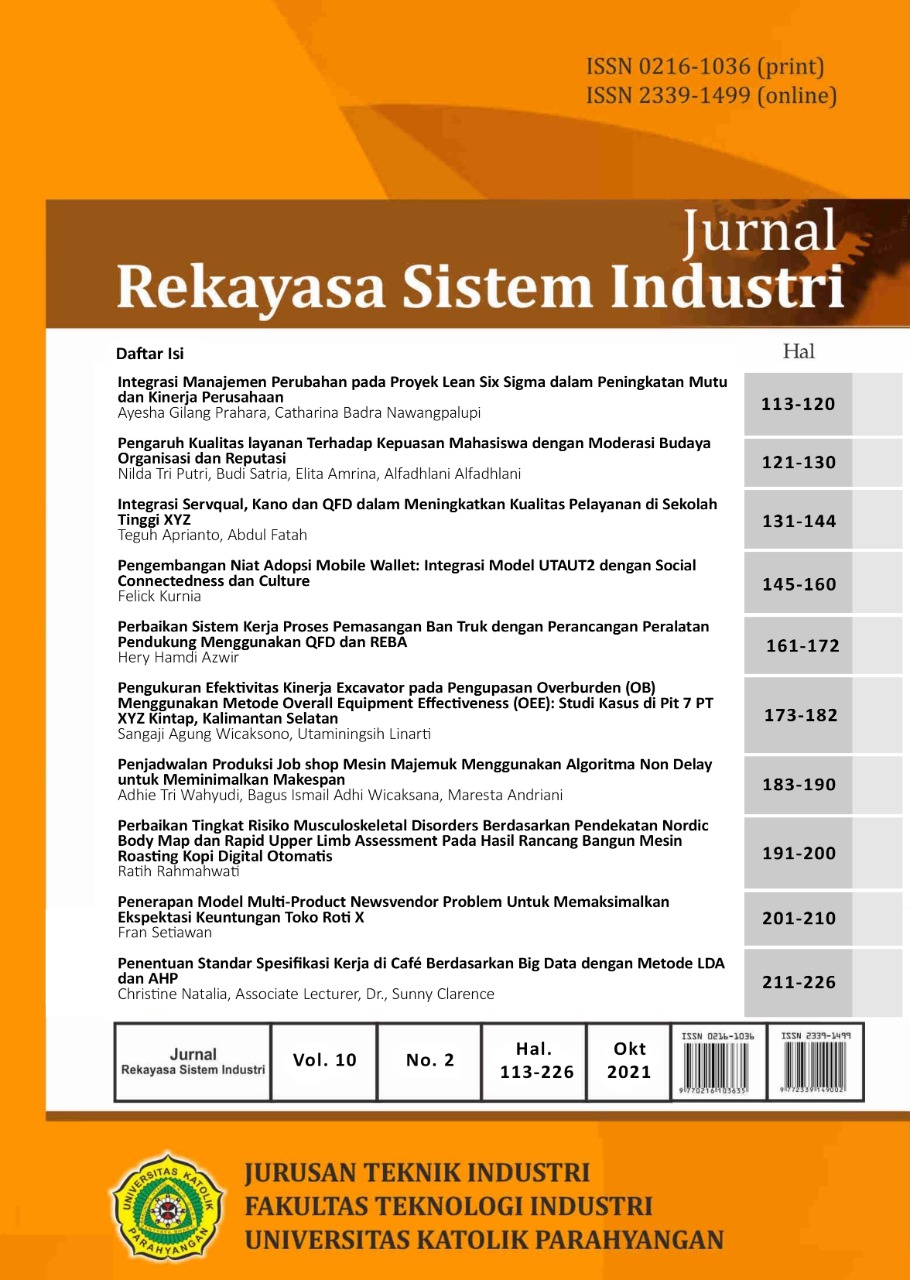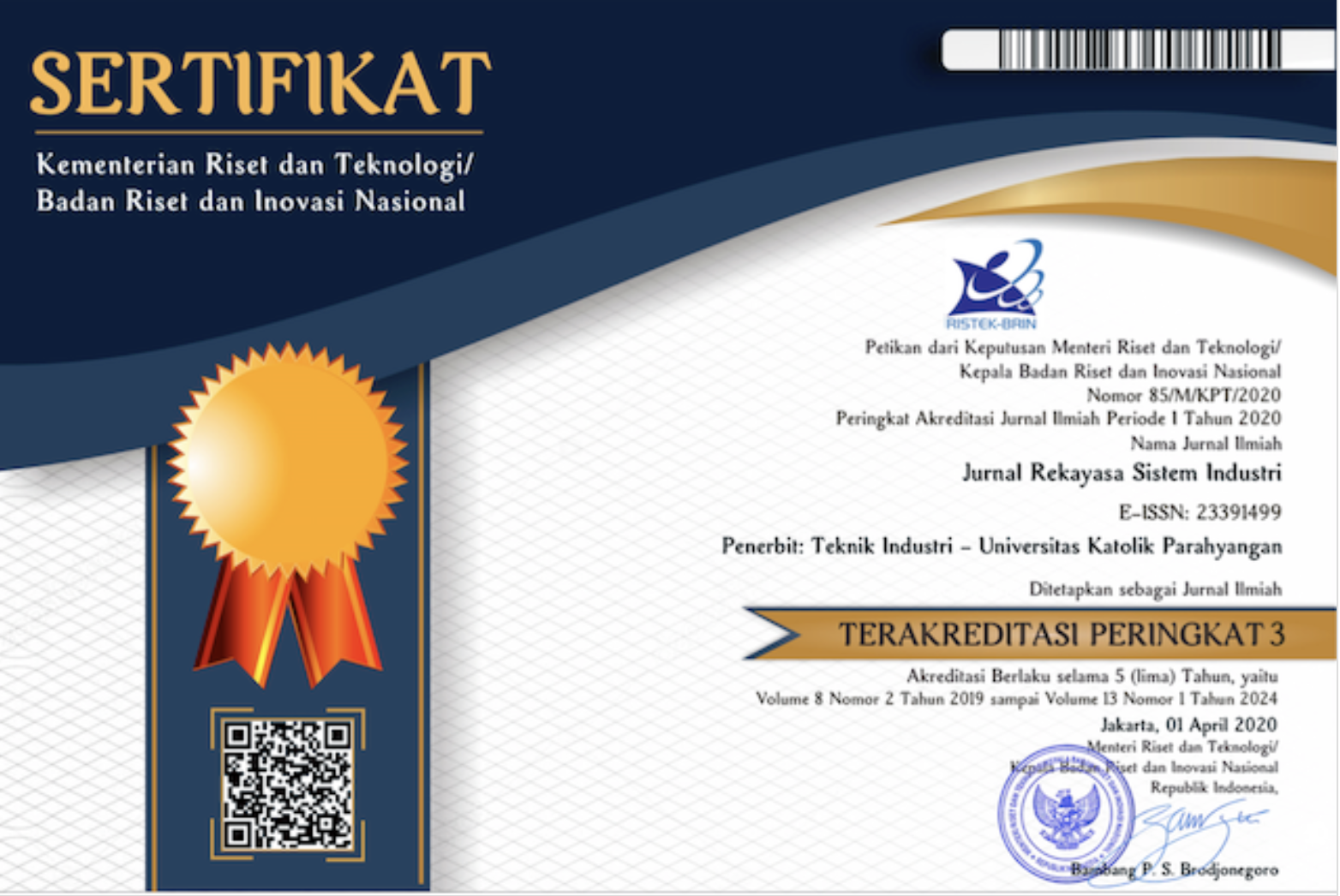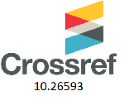Pengembangan Niat Adopsi Mobile Wallet: Integrasi Model UTAUT2 dengan Social Connectedness dan Culture
DOI:
https://doi.org/10.26593/jrsi.v10i2.4374.145-160Kata Kunci:
adopsi mobile wallet, culture, social connectedness, UTAUT2Abstrak
Teknologi smartphone telah berkembang pesat di seluruh dunia. Hal ini memungkinkan berbagai perusahaan, termasuk institusi keuangan untuk meningkatkan layanan bagi pelanggan. Mobile wallet merupakan sistem pembayaran tanpa uang tunai yang dilakukan dengan menggunakan telepon seluler. Sejak 2010, Bank Indonesia sudah mendorong penggunaan sistem pembayaran tanpa uang tunai, termasuk mobile wallet. Meskipun usaha telah dilakukan penggunaan sistem pembayaran uang tunai di Indonesia masih rendah. Penelitian ini mempelajari hal yang menentukan niat konsumen untuk mengadopsi mobile wallet. Model penelitian yang diusulkan dibuat berdasarkan model Unified Theory of Acceptance and Use of Technology 2 (UTAUT2). Penelitian ini memberikan kontribusi teoretis dengan mengintegrasikan model UTAUT2 dengan social connectedness dan culture. Model yang diusulkan diuji secara empiris berdasarkan 139 data konsumen di Indonesia. Pengujian model pengukuran dan model struktural dilakukan dengan menggunakan partial least square structural equation modeling. Penelitian ini menemukan bahwa performance expectancy, hedonic motivation, price value, dan habits secara signifikan mempengaruhi niat konsumen untuk mengadopsi mobile wallet. Penelitian ini juga menemukan bahwa social connectedness secara signifikan mempengaruhi performance expectancy dan effort expectancy. Temuan penelitian ini menawarkan kontribusi praktis bagi penyedia jasa layananan mobile wallet untuk dapat mengembangkan strategi yang efektif untuk meningkatkan jumlah pengguna mobile wallet di Indonesia.
Referensi
Alaeddin, O., Rana, A., Zainudin, Z., & Kamarudin, F. (2018). From physical to digital: Investigating consumer behaviour of switching to mobile wallet. Polish Journal of Management Studies, 17(2), 18–30. https://doi.org/10.17512/pjms.2018.17.2.02
Anjelina, A. (2018). Persepsi Konsumen Pada Penggunaan E-Money. Journal of Applied Managerial Accounting, 2(2), 219–231. https://doi.org/10.30871/jama.v2i2.934
Aydin, G. (2016). Adoption of mobile payment systems: a study on mobile wallets. Pressacademia, 5(1), 73–73. https://doi.org/10.17261/pressacademia.2016116555
Baptista, G., & Oliveira, T. (2015). Understanding mobile banking: The unified theory of acceptance and use of technology combined with cultural moderators. Computers in Human Behavior, 50(December 2018), 418–430. https://doi.org/10.1016/j.chb.2015.04.024
Cho, E., & Son, J. (2019). The effect of social connectedness on consumer adoption of social commerce in apparel shopping. Fashion and Textiles, 6(1). https://doi.org/10.1186/s40691-019-0171-7
Davis, F. D. (1989). Perceived usefulness, perceived ease of use, and user acceptance of information technology. MIS Quarterly: Management Information Systems, 13(3), 319–339. https://doi.org/10.2307/249008
Hair, J. F., Sarstedt, M., Hopkins, L., & Kuppelwieser, V. G. (2014). Partial least squares structural equation modeling (PLS-SEM): An emerging tool in business research. European Business Review, 26(2), 106–121. https://doi.org/10.1108/EBR-10-2013-0128
Hofstede, G. (1980). Culture and Organizations. International Studies of Management & Organization, 10(4), 15–41. https://doi.org/10.1080/00208825.1980.11656300
Jia, L., Hall, D., & Sun, S. (2014). The effect of technology usage habits on consumers’ intention to continue use mobile payments. 20th Americas Conference on Information Systems, AMCIS 2014, 1–12.
Keramati, A., Hadjiha, B., Taeb, R., & Mojir, N. (2011). Adoption of Electronic Payment Services by Iranian Customers. International Journal of Customer Relationship Marketing and Management, 1(4), 80–97. https://doi.org/10.4018/jcrmm.2010100105
Khan, I. U., Hameed, Z., & Khan, S. U. (2017). Understanding online banking adoption in a developing country: UTAUT2 with cultural moderators. Journal of Global Information Management, 25(1), 43–65. https://doi.org/10.4018/JGIM.2017010103
Kim, C., Mirusmonov, M., & Lee, I. (2010). An empirical examination of factors influencing the intention to use mobile payment. Computers in Human Behavior, 26(3), 310–322. https://doi.org/10.1016/j.chb.2009.10.013
Liwei, L., & Erdong, Z. (2008). China’s generation y: New trend-setter in the workforce. 2008 International Conference on Wireless Communications, Networking and Mobile Computing, WiCOM 2008, 1–4. https://doi.org/10.1109/WiCom.2008.1678
Madan, K., & Yadav, R. (2016). Behavioural intention to adopt mobile wallet: a developing country perspective. Journal of Indian Business Research, 8(3), 227–244. https://doi.org/10.1108/JIBR-10-2015-0112
Megadewandanu, S., Suyoto, & Pranowo. (2017). Exploring mobile wallet adoption in Indonesia using UTAUT2: An approach from consumer perspective. Proceedings - 2016 2nd International Conference on Science and Technology-Computer, ICST 2016, 11–16. https://doi.org/10.1109/ICSTC.2016.7877340
Morosan, C., & DeFranco, A. (2016). It’s about time: Revisiting UTAUT2 to examine consumers’ intentions to use NFC mobile payments in hotels. International Journal of Hospitality Management, 53, 17–29. https://doi.org/10.1016/j.ijhm.2015.11.003
Palau-Saumell, R., Forgas-Coll, S., Sánchez-García, J., & Robres, E. (2019). User Acceptance of Mobile Apps for Restaurants: An Expanded and Extended UTAUT-2. Sustainability, 11(4), 1210. https://doi.org/10.3390/su11041210
Sánchez-Franco, M. J., Martínez-López, F. J., & Martín-Velicia, F. A. (2009). Exploring the impact of individualism and uncertainty avoidance in Web-based electronic learning: An empirical analysis in European higher education. Computers and Education, 52(3), 588–598. https://doi.org/10.1016/j.compedu.2008.11.006
Seetharaman, A., Kumar, K. N., Palaniappan, S., & Weber, G. (2017). Factors Influencing Behavioural Intention to Use the Mobile Wallet in Singapore. Applied Economics and Business Research, 7(2), 116–136.
Shaw, N. (2014). The mediating influence of trust in the adoption of the mobile wallet. Journal of Retailing and Consumer Services, 21(4), 449–459. https://doi.org/10.1016/j.jretconser.2014.03.008
Singh, N., Sinha, N., & Liébana-Cabanillas, F. J. (2020). Determining factors in the adoption and recommendation of mobile wallet services in India: Analysis of the effect of innovativeness, stress to use and social influence. International Journal of Information Management, 50(October 2018), 191–205. https://doi.org/10.1016/j.ijinfomgt.2019.05.022
Srite, M., & Karahanna, E. (2006). The role of espoused national cultural values in technology acceptance. MIS Quarterly: Management Information Systems, 30(3), 679–704. https://doi.org/10.2307/25148745
Taufan, A., & Yuwono, R. T. (2019). Analysis of Factors That Affect Intention to Use e-Wallet through the Technology Acceptance Model Approach ( Case Study : GO-PAY ). 8(7), 413–419. https://doi.org/10.21275/ART2020219
Tavares, J., Goulão, A., & Oliveira, T. (2018). Electronic Health Record Portals adoption: Empirical model based on UTAUT2. Informatics for Health and Social Care, 43(2), 109–125. https://doi.org/10.1080/17538157.2017.1363759
Venkatesh, V., Thong, J. Y. L., & Xu, X. (2012). Consumer Acceptance and Use of Information Technology. MIS Quarterly, 36(1), 157–178. Retrieved from http://papers.ssrn.com/sol3/papers.cfm?abstract_id=2002388
Wang, H. M., & Idertsog, B. (2015). A Study on User ’ s Intention of Using Mobile Payments. International Journal of Sciences: Basic and Applied Research (IJSBAR), 24(6), 433–449.
Williams, M. D., & Dwivedi, Y. K. (2013). Delivered by Ingenta to : Guest User (Vol. 13).
Yang, S. Y. (2013). Understanding Undergraduate Students’ Adoption of Mobile Learning Model: A Perspective of the Extended UTAUT2. Journal of Convergence Information Technology, 8(10), 969–979. https://doi.org/10.4156/jcit.vol8.issue10.118
Yeniyurt, S., & Townsend, J. D. (2003). Does culture explain acceptance of new products in a country?: An empirical investigation. International Marketing Review, 20(4), 377–396. https://doi.org/10.1108/02651330310485153
Yoon, C. (2009). The effects of national culture values on consumer acceptance of e-commerce: Online shoppers in China. Information and Management, 46(5), 294–301. https://doi.org/10.1016/j.im.2009.06.001
Yuan, S., Ma, W., Kanthawala, S., & Peng, W. (2015). Keep Using My Health Apps: Discover Users’ Perception of Health and Fitness Apps with the UTAUT2 Model. Telemedicine and E-Health, 21(9), 735–741. https://doi.org/10.1089/tmj.2014.0148
Zhou, T., Lu, Y., & Wang, B. (2010). Integrating TTF and UTAUT to explain mobile banking user adoption. Computers in Human Behavior, 26(4), 760–767. https://doi.org/10.1016/j.chb.2010.01.013













